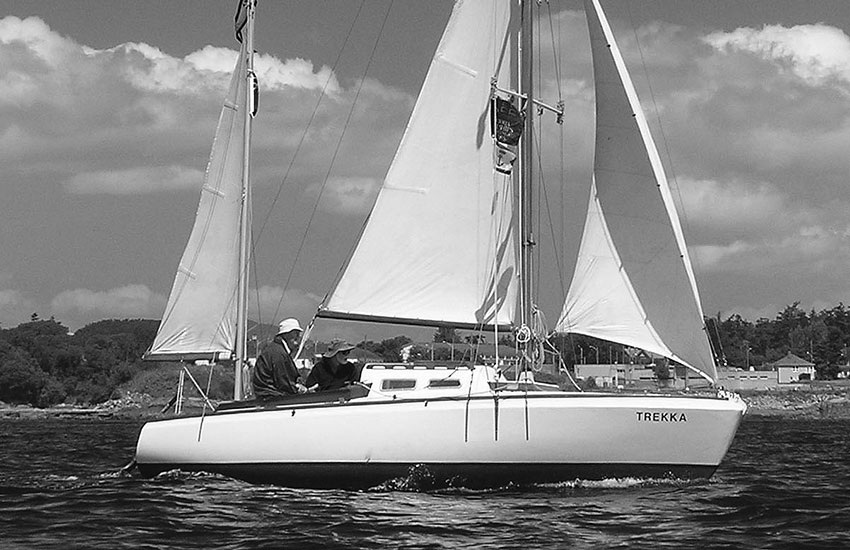I just added it up and not counting a rowing/sailing dory skiff I once built, I have owned 12 different cruising sailboats. These range from a home built Bolger Chebbacco - a half ton 20 foot wooden cat yawl to a Graham Shannon Coast 34 - weighing 20 times as much and 34 feet long. In between I have owned two Cal 29s - excellent boats that have taken me around Vancouver Island and down to Mexico and back. On the smaller side I briefly owned a wooden Trekka - sistership to the famous Trekka that John Guzwell sailed around the world in the late 50's, a Farr 727 - probably the raciest cruising boat I have owned, a C&C 24 - fast and roomy for her length, and a Paceship 26 - a huge 26 footer actually more like 27 that sailed surprisingly well given her cast iron keel and modest looks. Shortly after I sold my share in the Chebacco to its co-owner, I imported from Ontario to Nova Scotia, an Abbott 22 - a very capable and fast little sloop that I made some short cruises on along the south shore of Nova Scotia.
 |
| Itchy and Scratchy was my first cabin cruising boat, built with my friend Fraser Howell who did most of the work on this lovely strip plank/cold molded hull. |
 |
| Optima was my first Cal 29. I sailed her around Vancouver island and all over the Gulf Islands when I owned her in Victoria BC |
 |
| I owned a replica of Trekka, a Laurent Giles design that was the smallest boat to circumnavigate when John Guzzwell sailed it around the world in the late 1950's |
 |
| We purchased Ladybug II, a Coast 34, in San Carlos Mexico and sailed her in Mexico for a few seasons before crossing to New Zealand via French Polynesia, Cook Islands, Samoa, and Tonga |
 |
| Upon returning to Canada we bought a Paceship 26 similar to that shown above. We owned her for a couple of years and took her up to Princess Loiusa Inlet and down to the San Juan Islands |
 |
| Crazy Anna is a Vancouver 27. I have admired this design for many years and considered buying one around the same time that I bought Ladybug. |
I have always found that the smaller boats were more fun to sail and less stressful to own. The main problem with them though was that longer voyages were perhaps a bit too much of an adventure, especially if I wanted to bring along my spouse. I think now that, for me, the ideal cruising boat should be just large enough that you can live on board in inclement weather for a week or two at a time. That makes standing headroom pretty well mandatory. Having a proper private toilet rather than a bucket is another requirement with more than one person on board, as is a decent galley to cook meals. Outside, while a hank on jib is simple and sails better, I appreciate the ability, as I get older, to furl and roll up a sail to deal with changes in weather and to make getting underway and coming into port that much easier. I love a tiller for its simplicity. An outboard motor is fine, but a diesel has the advantage of longer range and no cavitation issues in rough seas. Finally, she should be able to function in rough weather and get you home in one piece when things get ugly.
I love my new boat. She ticks pretty well all the boxes and is well mannered and a delight to sail. She was fitted out by Bob Wheeldon from whom I bought her in September. She was originally sold as a bare hull and was not properly finished inside at all. Bob had her shipped from Vancouver to Kelowna and carefully designed and build a completely new interior and all systems. He then had the engine rebuilt, redid the rig, and added a furler. She has a full complement of sails and can be rigged as a cutter. She even came with a lightly used Monitor wind vane and a lovely custom arch to which Bob had planned to fasten a solar panel. Bob kept notes on everything and provided me with binders of information, tons of spare parts, and even a set of cruising guides and charts!
I had Crazy Anna out on her first trip a few days ago and she surprised me by how well she sailed both to windward and downwind. As Bob told me, she has no vices.






















































